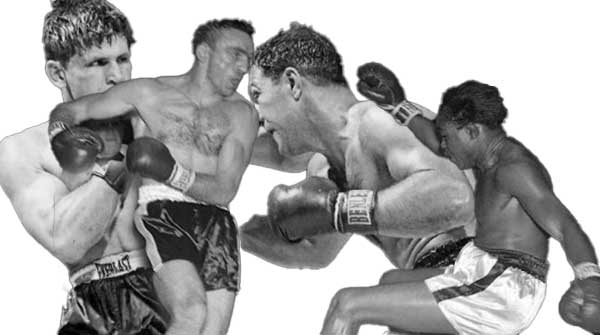The losers of two boxing contests held that month proved to be the real winners in life
 There was a time when professional boxing was very much a mainstream sport. American television regularly featured live prime-time bouts and newspaper coverage was generous. World championship fights got special attention, particularly in the heavyweight division.
There was a time when professional boxing was very much a mainstream sport. American television regularly featured live prime-time bouts and newspaper coverage was generous. World championship fights got special attention, particularly in the heavyweight division.
There’d be build-up stories prior to the event and “tale of the tape” graphics depicting comparative physical features like height, weight and reach. The whole thing had the anticipatory aura of an impending gladiatorial contest. And on the day after, there’d be an extensive report and at least one action shot, the more dramatic the better. It was easy to get hooked.
September 1953 served up two world championship contests, beginning with the September 18 welterweight battle between champion Kid Gavilan and challenger Carmen Basilio.
 |
| Related Stories |
| Rocky Marciano vs Sugar Ray Robinson
|
| Luis Ángel Firpo was boxing’s Wild Bull of the Pampas
|
| How Gene Tunney brought down a boxing legend and an era
|
Born Gerardo Gonzalez in Camaguey, Cuba, Gavilan had been fighting professionally since 1943. He was a very popular, flamboyant boxer, especially noted for his half-hook, half-uppercut “bolo” punch, a motion he attributed to his youthful years cutting sugar with a machete.
Basilio, on the other hand, was an Italian-American from upstate New York. While he had none of Gavilan’s flashiness, his relentless aggression was also a crowd-pleaser. With Basilio in the ring, things would never be dull.
The fight took place in Syracuse, close to Basilio’s hometown of Canastota, so he benefited from a partisan home crowd. Initially, it looked as if they were going to get what they wanted.
Gavilan was dropped in round two, only the second time he’d ever been knocked off his feet, and Basilio led on all three officiating scorecards as the fight headed into its second half. But Gavilan rallied and did enough to squeeze out a split decision, meaning that two of the three officials gave him the nod. With a broken nose and damaged left eye, the hometown favourite fell just a tad short.
Next up was an even tastier treat, September 24’s clash between heavyweight champion Rocky Marciano and challenger Roland LaStarza. It took place in New York City’s Polo Grounds before a crowd of almost 45,000.
Marciano was a rugged Italian-American brawler from Massachusetts who wasn’t fastidious about following the rules of the ring. LaStarza, also Italian-American, was a different animal entirely. Handsome and defensively skilled, he was a boxer rather than a brawler.
They’d fought once before in 1950, at a point when they were both upcoming new prospects. Lots of observers felt the decision that night should have gone to LaStarza, a position that he himself fully endorsed. He elaborated decades later, expressing the view that the New York connections of Marciano’s manager made the difference.
But whatever the truth of that assertion, there was no doubt about what happened on September 24. LaStarza held his own for the first six rounds, after which he gradually succumbed to a brutal beating before the referee called a halt in the 11th round. Notwithstanding the pounding he’d taken and Marciano’s typical disregard for the rules, LaStarza was gracious in defeat. Marciano was, he said, “definitely a better fighter than when I fought him before – 5,000 percent better.”
Subsequent life treated the four September warriors quite differently.
Marciano was the first to go, killed at age 45 in a July 1969 small plane crash. When located, his body had been cut in two.
After retiring unbeaten in 1956, Marciano led a frenetic, even troubled, life. Always more complicated than the regular-guy persona projected during his fighting years, he had many foibles, including a distrust of banks, a preference for payment in cash and a habit of stashing it in various places around the country. None of it was ever found.
Gavilan quit boxing in 1958 and returned to his native Cuba, where he ran afoul of Fidel Castro. The ranch he’d acquired for his retirement was confiscated, and he was virtually penniless and afflicted with failing eyesight when he was permitted to leave Cuba and return to America in 1968. He died of a heart attack in Florida at the age of 77 in 2003.
After boxing, LaStarza pivoted to a small-time acting career before subsequently moving to his cattle ranch in Florida. He was 82 when he died in 2009.
Basilio went on to win both welterweight and middleweight titles, courageously testified against the Mafia in 1960, and retired from boxing in 1961. Despite requiring a triple heart bypass in the late 1990s, he lived until 2012 and died at the age of 85.
In a real sense, September 1953’s losers were the winners in life. Sometimes it happens that way.
Troy Media columnist Pat Murphy casts a history buff’s eye at the goings-on in our world. Never cynical – well, perhaps a little bit.
For interview requests, click here.
The opinions expressed by our columnists and contributors are theirs alone and do not inherently or expressly reflect the views of our publication.
© Troy Media
Troy Media is an editorial content provider to media outlets and its own hosted community news outlets across Canada.

